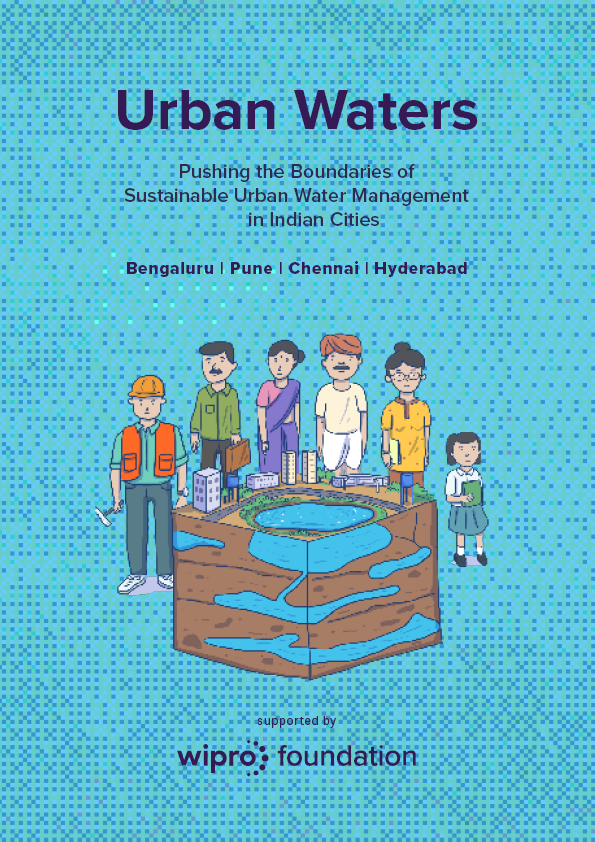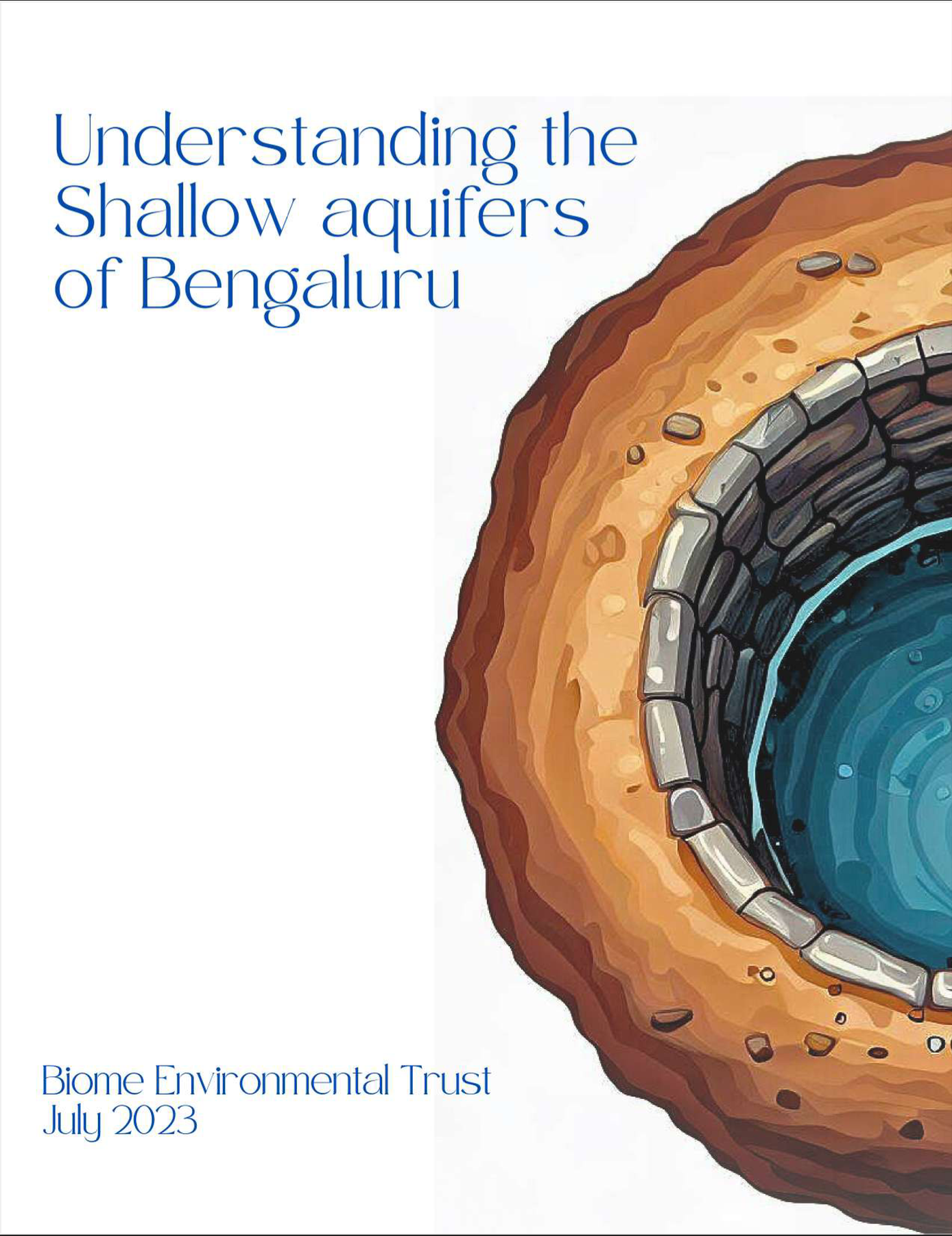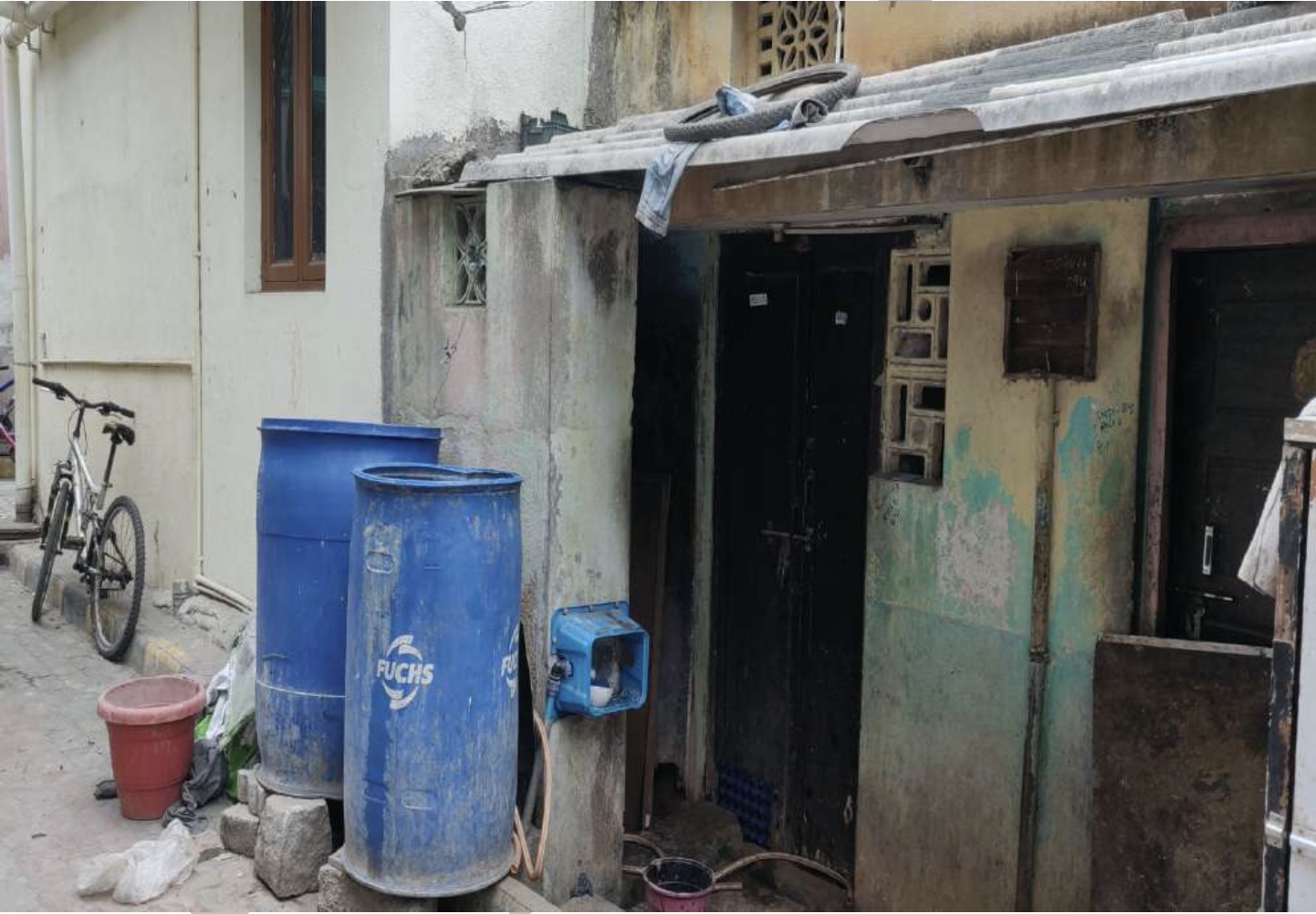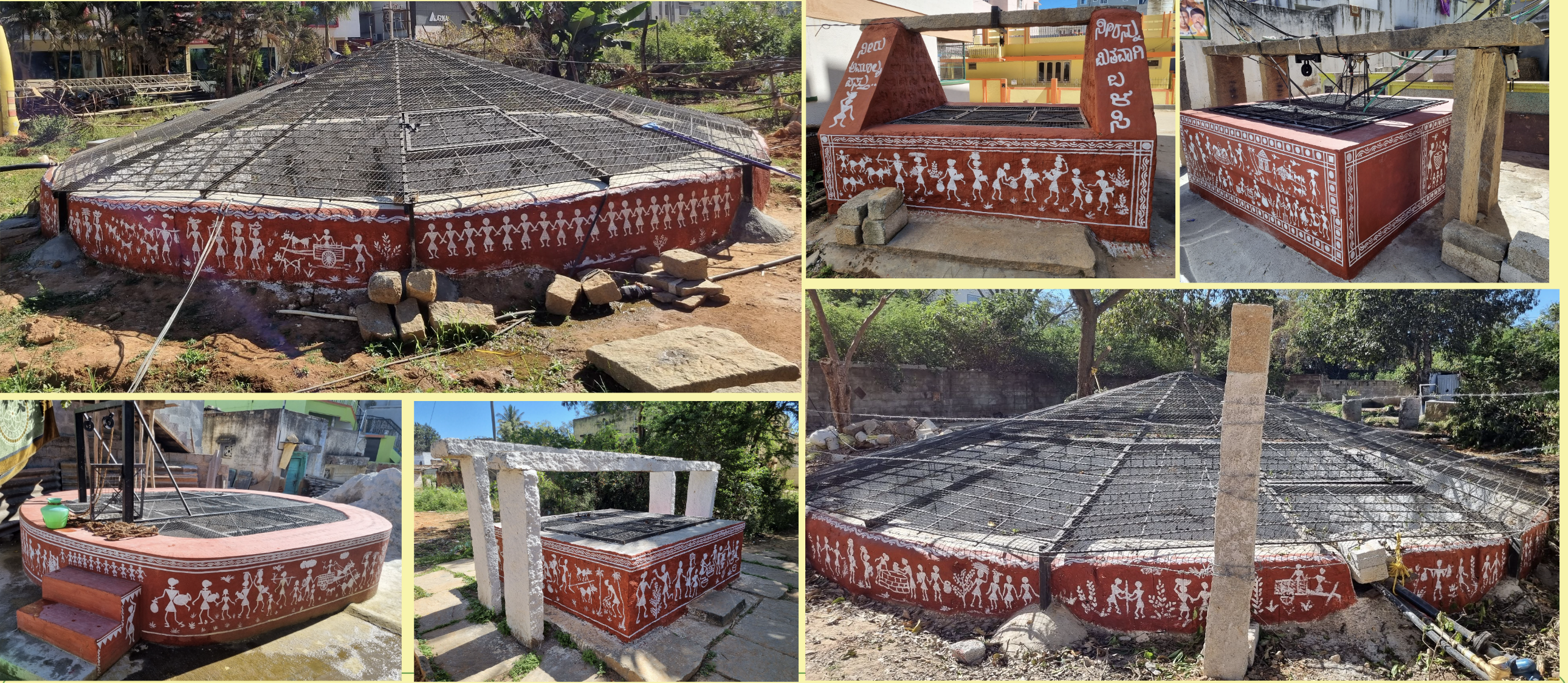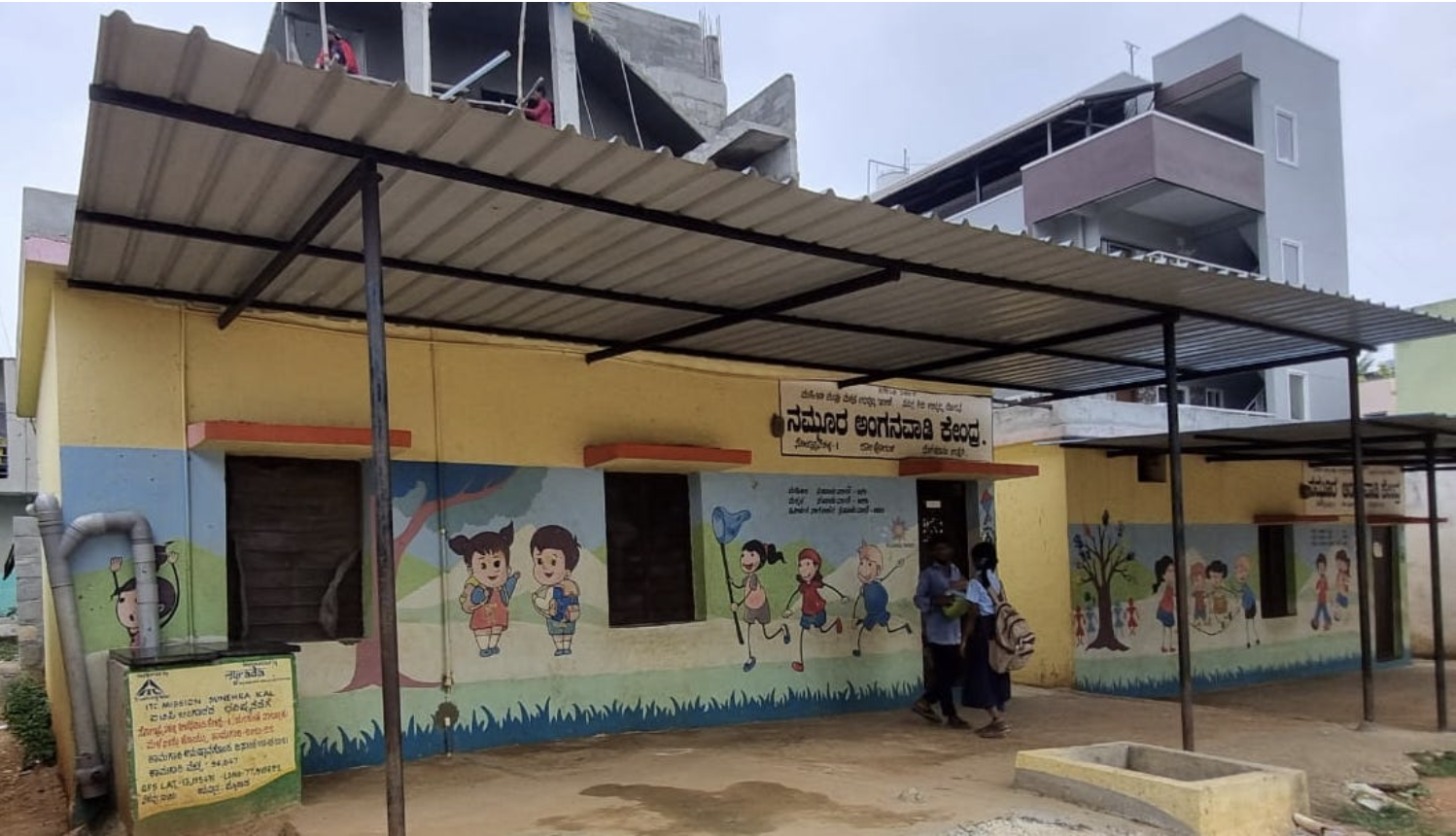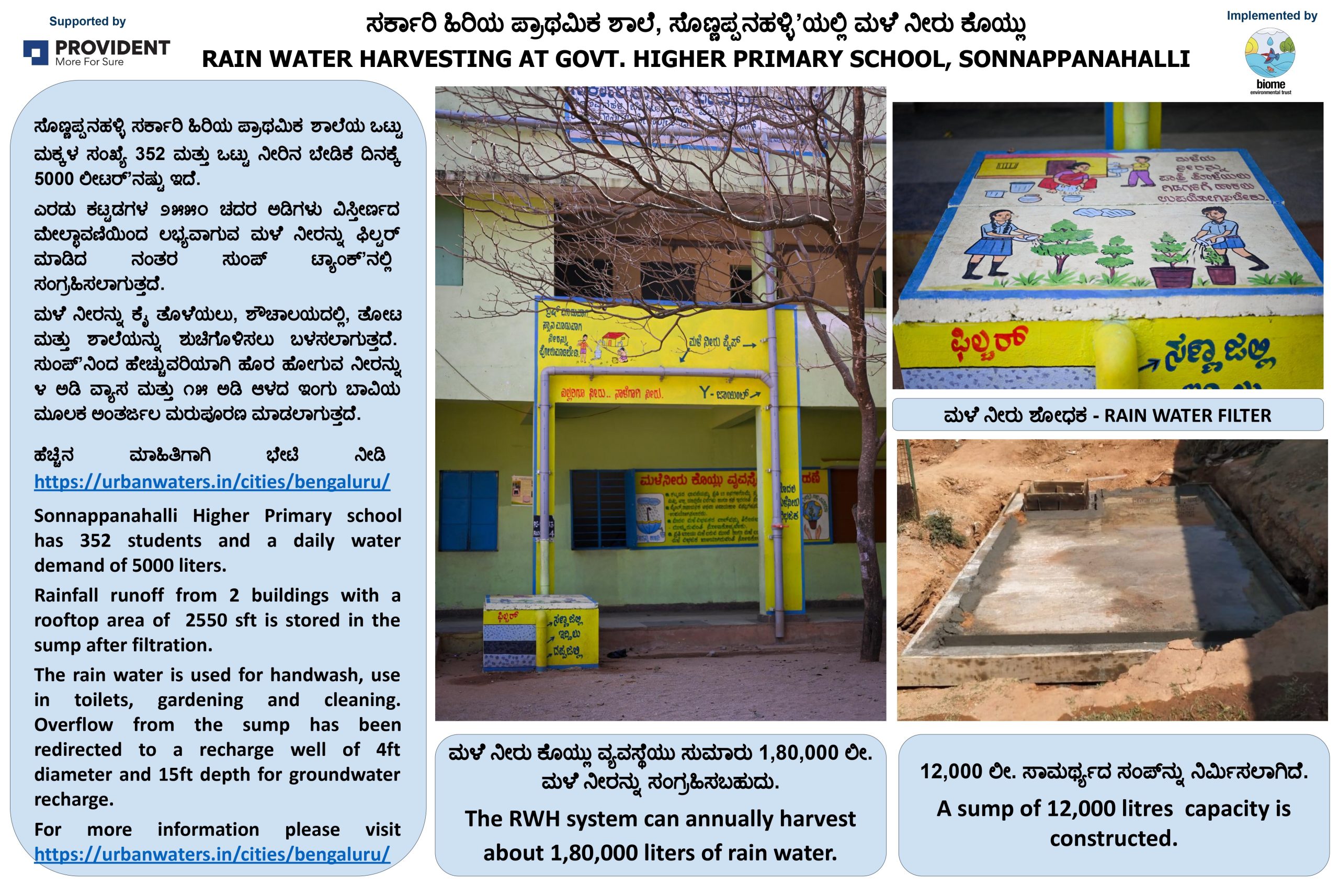Seepage Management at Safina Towers

Safina Towers is a 13-year-old multi-storied office building with two towers on Ali Asker Road, Bengaluru. Set in a 2.5-acre plot, with two parking basements, upper and lower, Safina Towers had been facing a seepage problem in their lower basement almost since the buildings were constructed. The seepage was occurring along the walls of the parking area, walls of the generator room, the sides of the ramp and the lift pits. It had been sought to be addressed by waterproofing – injecting polyurethane putty into the walls under pressure. This did not prove to be very effective.

In the heavy monsoon rains of September 2017, the volume of seepage increased to worrying levels, and the maintenance head of Safina Towers, Mr Madhiazhagan, got in touch with Biome seeking solutions to this problem. He had earlier engaged Antarjal to do a hydrology study, in which they reported that the reason for the seepage was most likely the subsurface flow of water from the National Military Memorial Park towards the south, which is an open area and at a higher elevation.
Biome recommended digging open wells along the southern border of the property. These would intercept the subsurface flow and hold the water in the wells. The southern walls of the wells (facing the building) would be sealed, to prevent water from seeping out of the wells and into the building basement. The water that collected in the wells could be pumped out and used by the building occupants for their needs, thus reducing the pressure on their borewells.
Safina Towers implemented Biome’s recommendations by digging two wells initially. The first well was dug at the eastern boundary of the campus, closer to Ali Asker road. The well location was chosen based on the narrative of the existence of an old well at that location. The second well was dug on the northern boundary of the campus. The wells had a diameter of 6 feet and a depth of 35 feet. Water was struck at 19 feet in the eastern well, and at 20 feet in the northern well. The eastern well had water flowing into it from all sides, while in the northern well; the main flow of water was from the direction of the Safina Towers buildings. This was a good sign as it indicated flow of subsurface water away from the building into the well, which would be likely to cause a potential reduction in basement seepage.



Biome recommended that water quality testing be carried out for the water in both wells, following which the water could be pumped up to the overhead tanks and used for the building’s needs. The initial water quality tests revealed the presence of bacteria in the water, so the water pumped from the wells was used only to water the garden.
A third well was dug a few months later on the southern side of the northeastern building (between the two buildings) in the campus. This was the deepest well at 39 feet, and the water quality test done in September 2018 revealed no bacteria.

In October 2018, Mr Madiazhagan emailed Biome as follows: ‘We are pleased to inform you that our basement is free from water seepage. The credit goes to you in suggesting to go in for open well around our building. We are able to pump out 1 lakh litres of water every day. We would like to utilize the water for other than drinking purposes after proper filtration or treatment to our existing sump tanks.’
On a visit to Safina Towers after receiving the email, the Biome team saw that the lower basement, including the generator room, was completely dry.
This project shows the beneficial effects of open wells – not only are they a dependable source of water, they are effective in addressing problems like flooding and seepage.


